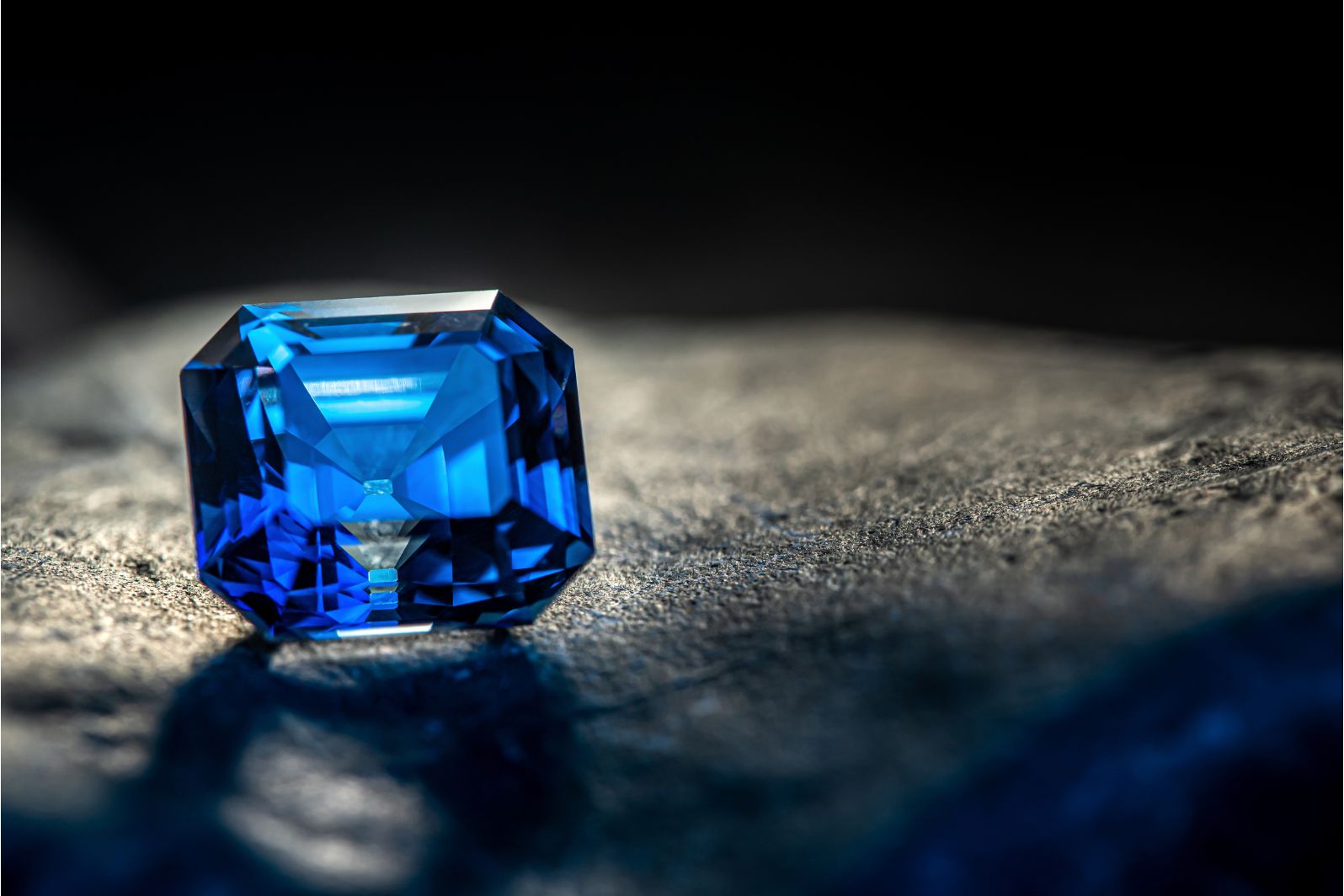If blue is your color (and let’s be real, it’s hard to resist), you’re in for a treat! From the dainty, azure heavens to the deep, mystic oceans, blue gemstones have captured the imaginations of cultures around the globe for centuries.
We’re about to embark on a treasure hunt like no other, delving into the histories, mysteries, and wonders of some of the most sought-after blue gems out there.
Fasten your seat belts as we set sail through royal blues, icy blues, ancient blues, and exotic blues. Get ready to be dazzled by different types of gemstones!
Aquamarine: The Sailor’s Stone
When it comes to the crème de la crème of valuable gemstones, sapphires are pretty much royalty. Hence the nickname ‘The Royal Blue’!
These babies have been stealing hearts for centuries. Kings and queens were all over them, convinced they were the ultimate good luck charms.
Not to mention, they were sure sapphires would protect them from harm and envy. The ancient Persians even believed that the earth was perched on a giant sapphire and that the sky’s blue color was just a reflection of the gem!
Now, you’d think something this epic must be super rare, right? Well, not exactly.
Sapphires have quite a few hideouts, from:
- Sri Lanka
- Myanmar
- Thailand
- Madagascar
- Australia
- USA
However, the purest blues typically come from the Kashmir region in India. But, just because they’ve got a bit of wanderlust doesn’t mean they’re all the same.
In fact, they’re a pretty diverse bunch. The value of sapphire can change dramatically depending on its hue, tone, and saturation. The most prized ones are vivid blue, but you can find them in lighter and darker shades too.
Tanzanite: Africa’s Exotic Blue
These gems are the new kids on the block in the world of gemstones, but they’ve made quite an entrance. Picture this: a Masai tribesman stumbled upon these stunning gems in Tanzania back in the 1960s.
Soon after, Tiffany & Co. (yes, that Tiffany) got wind of it, gave it its name, and introduced it to the world. Tanzanite quickly got the rep of being one of the most dazzling gemstones ever. With its crazy cocktail of:
- Blue
- Violet
- Burgundy hues
Okay, here’s the thing: Tanzanite’s only found in one teeny-tiny spot on the entire planet. It’s like the VIP room of gemstones.
You’ll find it in the Merelani Hills near Mount Kilimanjaro in Tanzania (hence the name!). And word on the street is that this supply may not last forever.
That’s right, the clock’s ticking! This exclusive source and its limited supply make tanzanite even more valuable and sought-after.
Now, what makes Tanzanite such a showstopper? Apart from its ethereal color, it has this thing called pleochroism. It means that the gem can show different colors depending on the angle you’re looking at it.
The gemstone value of tanzanite is judged by the depth of its:
- Color
- Clarity
- Size
It is a beautiful stone, so don’t hesitate to learn more about tanzanite!
Lapis Lazuli: The Ancient Blue
Lapis Lazuli, say that five times fast! This striking blue gemstone isn’t just a mouthful to say, it’s also packed full of history.
The Egyptians were particularly fond of it, using it for:
- Jewelry
- Carvings
- Grinding it up for makeup
Now that’s what we call a royal beauty regimen. It was also used to create some of the most beautiful art during the Renaissance period.
The main source of Lapis Lazuli is the remote Badakhshan region in Afghanistan. This area has been producing top-notch Lapis for over 7,000 years!
Other sources include:
- Chile
- Russia
- The USA
- Canada
Lapis Lazuli’s rich, deep blue color with golden inclusions of pyrites is what makes it truly unique. These sparkly golden bits make it look like a starry night sky.
The value depends on the intensity of the blue color and the quantity and distribution of pyrite inclusions. Lapis with no or few pyrite inclusions and a deep uniform blue color are usually more valuable.
Over the centuries, there have been a bunch of famous Lapis Lazuli artifacts. A few standouts include the funeral mask of Tutankhamun and the eyebrows on the funeral mask of Queen Malakaye. These pieces really showcase the gem’s rich color and its importance in ancient cultures.
Blue Topaz: The Icy Blue
Now, Topaz has been around for ages, and it’s always been pretty popular. But here’s a cool fact – Blue Topaz didn’t always start out blue!
Most of the time, it’s treated with a little bit of radiation and heat to bring out that stunning sky-blue to deep ocean-blue color. But don’t worry, by the time it gets to you, it’s perfectly safe to wear.
Topaz, in general, was a big hit with the ancient Greeks and Romans. They believed it had the power to increase strength and make its wearer invisible, which honestly, sounds like the best superhero origin story ever!
Blue Topaz comes in a few different shades: Sky Blue Topaz is the lightest, Swiss Blue Topaz has a more vivid blue color, and London Blue Topaz is the deepest, and some would say, the most mysterious of the lot.
When it comes to grading, color is king. The clearer and more vibrant the blue, the more valuable the stone.
Enjoy These Blue Gemstones Today
As we dock back to shore, it’s time to bid farewell to the incredible adventure we’ve shared through the captivating realm of blue gemstones. These stones aren’t just beautiful; they’re keepers of history, art, and endless fascination.
Whether you’re a collector, a dreamer, or an admirer, may the blue gems we’ve explored today continue to inspire and fascinate you. Till our next adventure, keep those sparkling dreams alive!
Keep browsing our blog for more!



